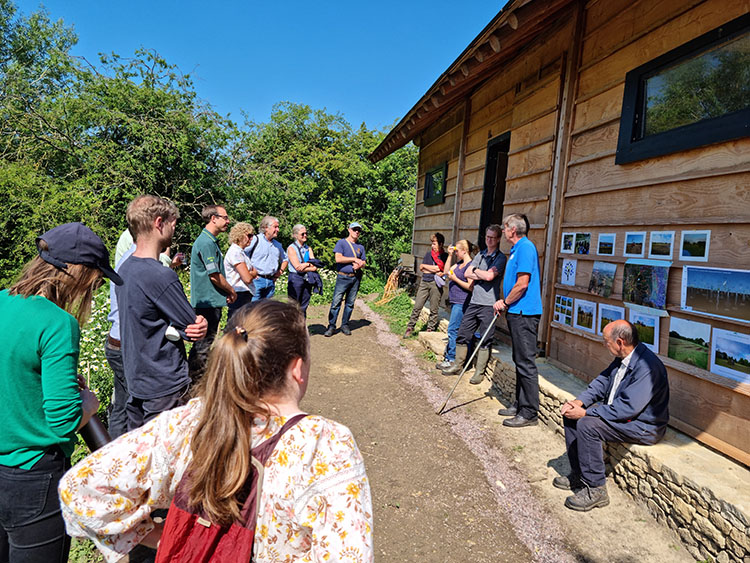This summer we are hoping to meet with Rebecca Pow MP Defra Minister for Nature Recovery and the Domestic Environment, along with a number of Defra civil servants with responsibilities for flooding and water quality policy. We are also organising a site visit for the Defra Environmental Land Management scheme team working on local nature recovery and landscape recovery and separately the All Party Parliamentary Groups for Nature, Water, Flooding and Farming - which just goes to show how floodplain meadows cut across a wide range of policy areas. In all of these meetings and site visits, we are trying to promote particular messages:
- Floodplains are vulnerable to climate change, and this is already having an impact on the vegetation, agricultural use and biodiversity they support. There are serious challenges facing floodplains from current land-use practices, which are harming the environment and jeopardising the long-term viability of floodplain land uses in the process.
- Floodplains only cover 5% of the land area in England, yet their contribution to our natural capital value is many times higher than that. They produce more food, store more water, support more biodiversity, store more carbon and have greater aesthetic, social and cultural value than the average piece of land. They are well mapped and should be regarded as a distinct land type with respect to schemes pertaining to planning, agriculture, biodiversity and the wider environment, but they are often treated the same as land in general. As a result, they are widely under-valued and sub-optimally managed.
- Similarly, their contribution to ecosystem services is undermined by a lack of recognition of this habitat within land-use management decision making, policies, strategies and funding.
How to address these challenges
- We wish to highlight the importance of floodplains to ensure they are treated as a distinct entity in all land-related policies, such that their contributions are recognised and promoted. For example, floodplains should be included as a specific category of land within the Environmental Land Management Scheme, so specific options for providing environmental benefits and public goods can be offered to landowners.
- We welcome the Government’s promotion of Nature Based Solutions – however existing schemes have been skewed by a focus on trees and peat. The Partnership would like to see a greater recognition of multifunctional habitats, such as species-rich grassland, in providing these solutions. Our remaining meadows have considerable value, but they need to be bigger, in better condition and more joined-up to provide all their potential benefits.
- We would like to see an overall Floodplain Strategy, allowing an alignment of different policies and financing, thus enabling floodplains to deliver greater public goods. Floodplains need to be future-proofed by setting targets for functioning floodplain habitats. The Floodplain Meadows Partnership could assist in drafting guidance. We suggest:
- 25% of floodplain area needs to be low input grassland (which equates to almost 200,000 ha) within 25 years – this is based on our knowledge of restoration potential and the scale we believe is necessary for functionality.
- 70,000 ha of this area to be species-rich habitat in Favourable Conservation Status - to deliver high-nature-value floodplains and to export nutrients from riverine systems in sufficient quantity to allow natural processes to recover.
 Environment Agency, Natural England and Defra officials visited Long Mead in 2021, a visit that helped to raise awareness amongst policy staff of the complex issues around floodplain meadows. © Emma Rothero
Environment Agency, Natural England and Defra officials visited Long Mead in 2021, a visit that helped to raise awareness amongst policy staff of the complex issues around floodplain meadows. © Emma Rothero
Subscribe to make sure you don't miss out!